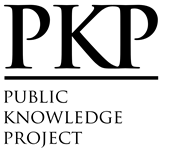Relationship between microbiota in the goldfish gut and fish digestive physiology: A meta-analysis approach
Abstract
The fish intestinal microbiota is associated with the fish's health status. This study aims to determine the relationship of the fish intestinal microbiota with the fish's physiological digestion. Methods used in this study are meta-analysis by collecting sources of relevant articles or journals with the research topic. The data is secondary data obtained from the process of analyzing articles or journals that have been obtained. The results showed that the type of microbiota is not different in each species of fish but the number of microbiota is different in each species of fish. The absence of differences is because this study only takes data from the dominant types of microbiota in each fish species, while differences in the number of microbiota are due to differences in environmental conditions, eating habits, fish health, fish species, and fish age. Some types of microbiota that become dominant and will be commonly found in various types of fish are Actinobacteria, Bacteroidetes, Firmicutes, Fusobacteria, and Proteobacteria. The presence of each type of microbiota will have different impacts and functions for the host. Keywords: Turtle, Rainfall, Wind Speed, Wave Height.
Keyword: Digestive Physiology; Goldfish; Intestine Microbiota
Full Text:
PDFReferences
Balagurunathan, R., Radhakrishnan, M., Shanmugasundaram, T., Gopikrishnan, V., and Jerrine, J. 2020. Evaluation of Actinobacteria for aquaculture applications: Protocols in Actinobacterial Research. New York: Springer. https://doi.org/10.1007/978-1-0716-0728-2_11
Cui, X., Zhang, Q., Zhang, Q., Zhang, Y., Chen, H., Liu, G., and Zhu, L. 2022. Research progress of the gut microbiome in hybrid fish. Microorganism, 10(5): 1-13. https://doi.org/10.3390%2Fmicroorganisms10050891
Dawood, M.A.O. 2020. Nutritional immunity of fish intestines: important insights for sustainable aquaculture. Reviews in Aquaculture, 13(1): 642-663. https://doi.org/10.1111/raq.12492
Dulski, T., Kazlowski, K., and Ciesielski, S. 2020. Habitat and seasonality shape the structure of tench (Tinca tinca L.) gut microbiome. Scientifiv Reports, 10(4460): 1-11. https://doi.org/10.1038/s41598-020-61351-1
Gadoin, E., Durand, L., Guillou, A., Crochemore, S., Bouvier, T., Roque, E., Dagorn, L., Auguet, J.C., Adingra, A., Desnues, C., and Bettarel, Y. 2021. Does the composition of the gut bacteriome change during the growth of tuna? Microorganisms, 9(6): 1-12. doi: 10.3390/microorganisms9061157
Ghosh, K., Harikrishnan, R., Mukhopadhyay, A., and Ringo, E. 2023. Fungi and actinobacteria: alternative probiotics for sustainable aquaculture. Fishes, 8(12): https://doi.org/10.3390/fishes8120575
Han, Z., Sun, J., Liu, X., Sun, X., Shi, H., and Guo, Y. 2021. The delimitation of intestine segments of koi carp ( Cyprinus carpio var. koi ) based on histological features. Anatomia, Histologia, Embryologia, 50(5): 763–769. doi:10.1111/ahe.12722
Hernández-Saldaña, O.F., Barboza-Corona, J.E., Bideshi, D.K., Casados-Vázquez, L.E. 2020. New bacteriocin-like substances produced by Streptomyces species with activity against pathogens. Folia Microbiol, 65: 669-678. https://doi.org/10.1007/s12223-020-00770-z
James, G., Geetha, P.P., Puthiyedathu, S.T., Jayadradhan, R.K.V. 2023. Applications of actinobacteria in aquaculture: prospects and challenges. 3 Biotech, 13(42): 1-15. https://doi.org/10.1007/s13205-023-03465-7
Johny T.K., Puthusseri R.M., Bhat S.G. 2021. A primer on metagenomics and next-generation sequencing in fish gut microbiome research. Aquaculture Research, 52(10): 4574–4600. doi: 10.1111/are.15373.
Kim, P.S., Shin, N.R., Lee, J.B., Kim, M.S., Whon, T.W., Hyun, D.W., Yun, J.H., Jung, M.J., Kim, J.Y., and Bae, J.W. 2021. Host habitat is the major determinant of the gut microbiome of fish. Microbiome, 9(166): 1-15. doi: 10.1186/s40168-021-01113-x
Krotman, Y., Yergaliyev, T. M., Alexander Shani, R., Avrahami, Y., & Szitenberg, A. 2020. Dissecting the factors shaping fish skin microbiomes in a heterogeneous inland water system. Microbiome 8(9): 1-15. doi: 10.1186/s40168-020-0784-5
Lai, K.P., Lin, X., Tam, N., Ho, J.C.H., Wong, M.K., Gu, J., Chan, T.F., and Tse, W.K.F. 2020. Osmotic stress induces gut microbiota community shift in fish. Environmental Microbiology, 22(9): 3784-3802. https://doi.org/10.1111/1462-2920.15150
Lau, M.M.L., Kho, C.J.Y., Lim, L.W.K., Sia, S.C., Chung, H.H., Lihan, S., and Apun, K. 2022. Microbiome analysis of gut bacterial communities of healthy and diseased Malaysian mahseer (Tor tambroides) using 16S rRNA metagenomics approach. Malaysian Journal of Microbiology, 18(2): 170-191. http://dx.doi.org/10.21161/mjm.211329
Lindsay, E.C., Metcalfe, N.B., & Llewellyn,, M.S. 2020. The potential role of the gut microbiota in shaping host energetics and metabolic rate. Journal of Animal Ecology, 89(11): 2415-2426. https://doi.org/10.1111/1365-2656.13327
Luan, Y., Li, M., Zhou, W., Yao, Y., Yang, Y., Zhang, Z., Ringo, E., Olsen, R.E., Clarke, J.L., Xie, S., Mai, K., Ran, C., and Zhou, Z. 2023. The fish microbiota: research progress and potential applications. Engineering, 29: 137–46. doi: 10.1016/j.eng.2022.12.011
Lu, G.Q., Wang, C.H., Zhao, J.L., Liao, X.L., Wang, J., Luo, M.K. 2020. Evolution and genetics of bighead and silver carps: native population conservation versus invasive species control. Evolutionary Applications, 13(6): 1351–1362. https://doi. org/10.1111/eva.12982
Luo, M., An, R., Fu, J., Wan, S., Zhu, W., Wang, L., and Dong, Z. 2021. Comparative analysis of the gut microbiota in bighead carp under different culture patterns. Journal of Applied Microbiology, 132(2): 1357–1369. https://doi.org/10.1111/jam.15248.
Ma, S., Yu, D., Liu, Q., Zhao, M., Xu, C., and Yu, J. 2022. Relationship between immune performance and the dominant intestinal microflora of turbot fed with different Bacillus species. Aquaculture, 549: 1-15. https://doi.org/10.1016/j.aquaculture.2021.737625
Mukherjee, A., Rodiles, A., Merrifield, D.L., Chandra, G., and Ghosh, K. 2020. Exploring intestinal microbiome composition in three Indian major carps under polyculture system: A high-throughput sequencing based approach. Aquaculture, 524: 1-10. https://doi.org/10.1016/j.aquaculture.2020.735206
Niu, K.M., Lee, B.J., Kothari, D., Lee, W.D., Hur, S.W., Lim, S.G., Kim, K.W., Kim, K.D., Kim, N.N., and Kim, S.K. 2020. Dietary effect of low fish meal aquafeed on gut microbiota in olive flounder (Paralichthys olivaceus) at different growth stages. Microbiology Open, 9(3): 1-14. https://doi.org/10.1002/mbo3.992
Ofek, T., Lalzar, M., Laviad-Shitrir, S., Izhaki, I., and Halpern, M. 2021. Comparative study of intestinal microbiota composition of six edible fish species. Frontiers of Microbiology, 12: 1-9. https://doi.org/10.3389/fmicb.2021.760266
Pardesi, B., Roberton, A.M., Lee, K.C., Angert, E.R., Rosendale, D.I., Boycheva, S., Putih, W.L., and Clements, K.D. 2022. Distinct microbiota composition and fermentation products indicate functional compartmentalization in the hindgut of a marine herbivorous fish. Molecular Ecology, 31(8): 2494-2509. https://doi.org/10.1111/mec.16394
Perry, W.B., Lindsay, E., Payne, C.J., Brodie, C., and Kazlauskaite, R. 2020. The role of the gut microbiome in sustainable teleost aquaculture. Proceedings of the Royal Society B, 287: 1-10. http://dx.doi.org/10.1098/rspb.2020.0184
Pingle, S.A., and Khandagle, A.J. 2023. A metagenomic analysis of gut microbiome phylogeny among four economically important carp species from wild and aquaculture farms. Journal of Applied Biology & Biotechnology 11(5): 105-111. DOI: 10.7324/JABB.2023.11512-1
Sehnal, L., Brammer-Robbins, E., Wormington, A.M., Blaha, L., Bisesi, J., Larkin, I., Martyniuk, C.J., Simonin, M., and Adamovsky, O. 2021. Microbiome composition and function in aquatic vertebrates: small organisms making big impacts on aquatic animal health. Frontiers in Microbology, 12: 1-12. https://doi.org/10.3389/fmicb.2021.567408
Su, S., Jing, X., Zhang, C., Hou, Y., Li, Z., Yang, X., Zhou, X., Xu, P., Tang, Y., and Zhu, J. 2021. Interaction between the intestinal microbial community and transcriptome profile in common carp (Cyprinus carpio L.). Frontiers in Microbiology, 12: 1-12. https://doi.org/10.3389/fmicb.2021.659602
Sun, Z., Fan, Y., Lyu, A., Hu, X., Shi, H., Chen, L., and Sun, J. 2021. Community and diversity analysis of microflora from different intestinal segments of koi carp(Cyprinus carpio var. koi). Journal of Southern Agriculture, 52(2): 483-490. DOI: 10.3969/j.issn.2095-1191.2021.02.025
Tang, Y., Wang, C., Jiang, H., Zhao, L., Qian, C., Guo, X., Sun, Y., Tang, B., Xuang, F., and Cheng, Y. 2023. Grazing effects of Xenocypris davidi Bleeker (Cyprinidae, Cypriniformes) on filamentous algae and the consequent effects on intestinal microbiota. Aquaculture Research, 2023: 1-14. https://doi.org/10.1155/2023/1985865
Uma, A., Subash, P., and Abraham, T.J. 2020. Importance of gut microbiota in fish – A review. Indian Journal of Animal Health, 59(2): 181-194. DOI: 10.36062/ijah.59.2SPL.2020.181-194
Wang, S., Zhang, J., Du, X., Liu, D., Liu, L., and Shen, X. 2022. Comparative analysis of the intestinal microbiota in goldfish and crucian carps between different aquaponics and traditional farming. Aquaculture Reports, 25: 1-12. https://doi.org/10.1016/j.aqrep.2022.101240
Yukgehnaish, K., Kumar, P., Sivachandran, P., Marimuthu, K., Arshad, A., Paray, B.A., and Arockiaraj, J. 2020. Gut microbiota metagenomics in aquaculture: factors influencing gut microbiome and its physiological role in fish. Reviews in Aquaculture, 12(3): 1903-1927. https://doi.org/10.1111/raq.12416
DOI: https://doi.org/10.29103/aa.v1i1.16753
 Article Metrics
Article Metrics
 Abstract Views : 33 times
Abstract Views : 33 times
Refbacks
- There are currently no refbacks.
Copyright (c) Acta Aquatica: Aquatic Sciences Journal

This work is licensed under a Creative Commons Attribution 4.0 International License.









